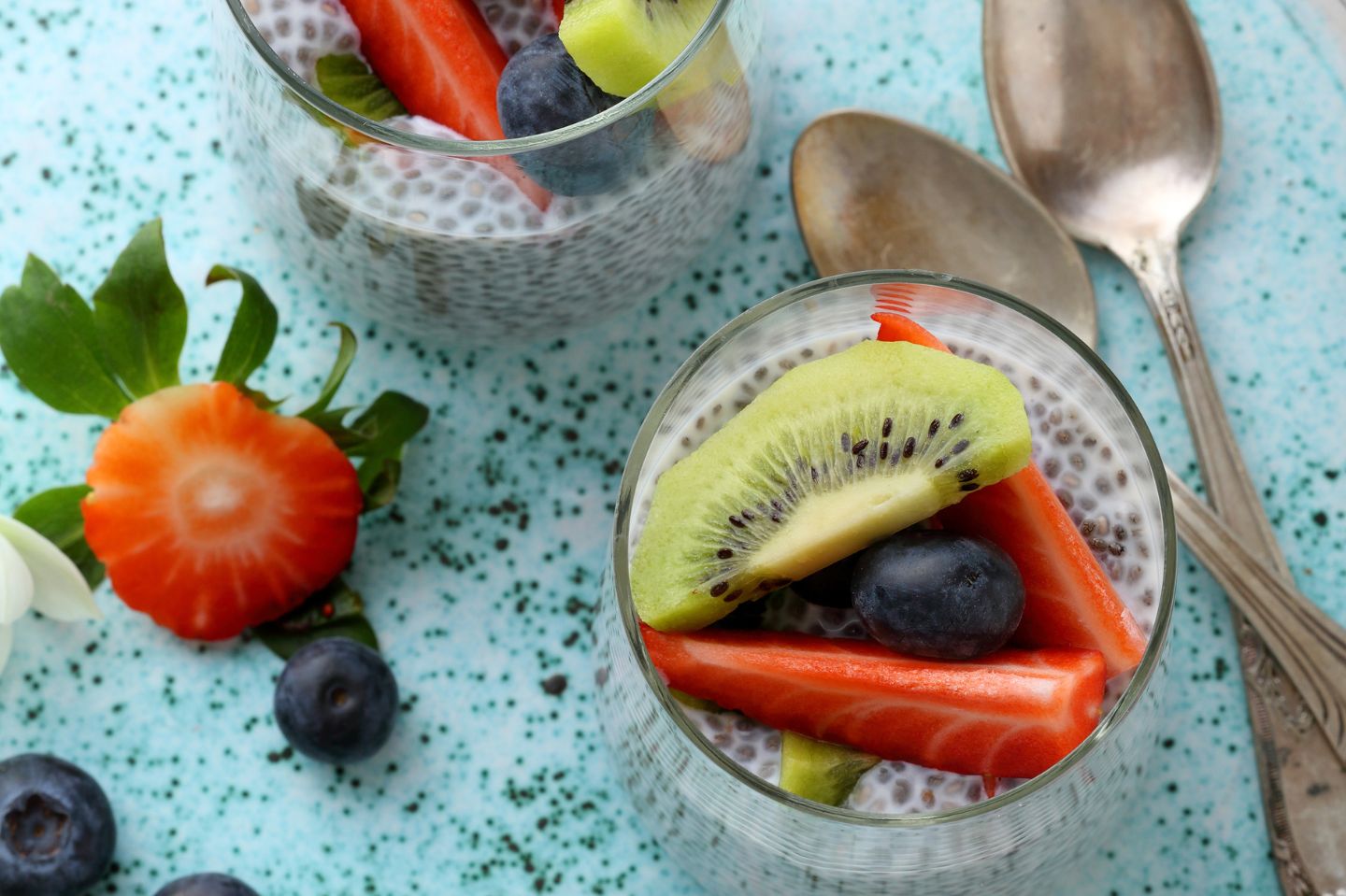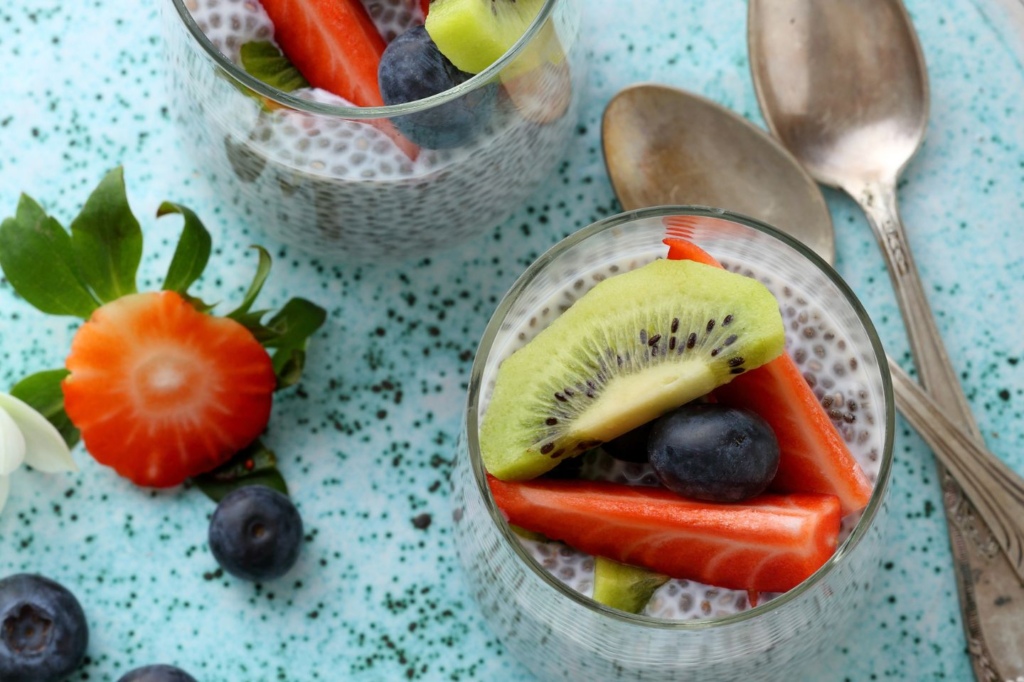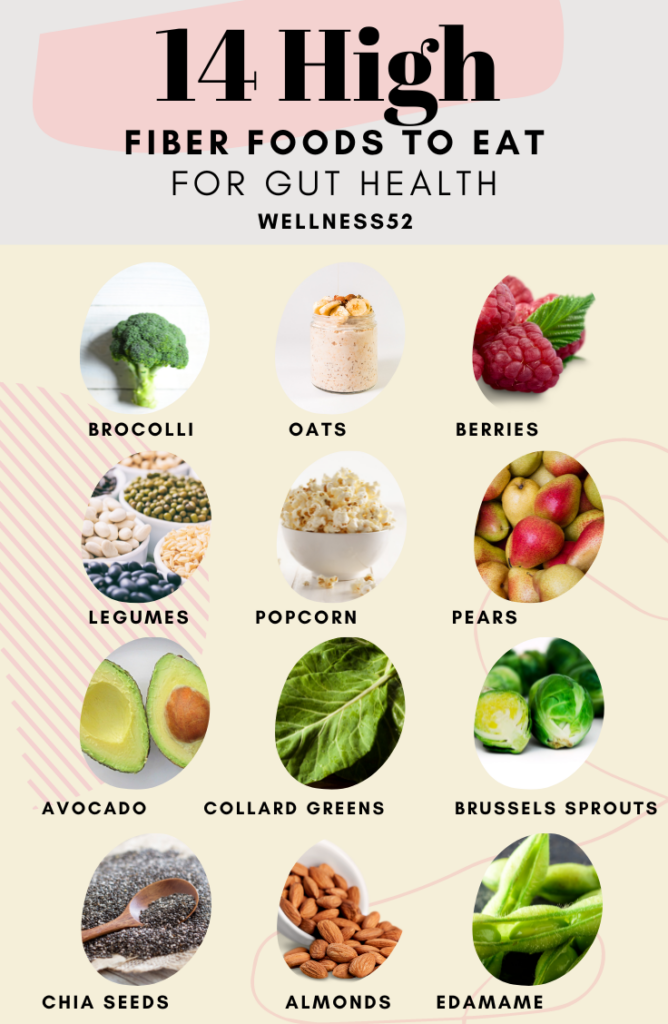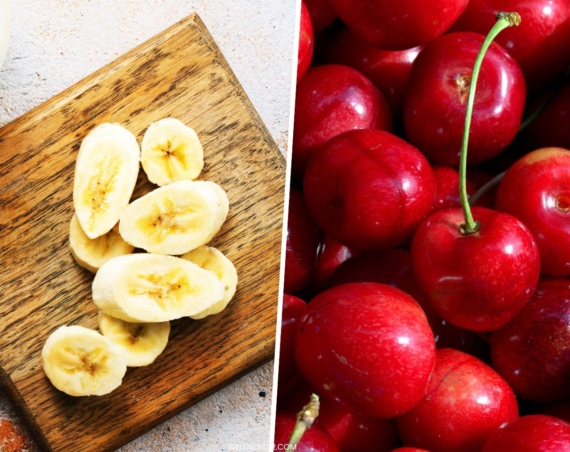
You might be familiar with the notion that incorporating high-fiber foods into your diet promotes regularity in your digestive system.
However, the benefits of fiber extend beyond that, including the potential to lower blood pressure, reduce cholesterol levels, and aid in weight loss.
Understanding Fiber in Your Diet: Fiber, a type of carbohydrate, is primarily found in fruits, vegetables, whole grains, and legumes (such as beans and peas). Unlike most carbs, which are converted into sugar during digestion, fiber passes through the body without being broken down.
There are two main types of fiber:
- Soluble Fiber: This type dissolves in water and forms a gel-like substance in your stomach and colon, slowing down digestion and promoting a feeling of fullness.
- Insoluble Fiber: Unlike soluble fiber, insoluble fiber does not dissolve in water and remains intact as it travels through your digestive system. It aids in clearing out your colon and enhancing gut health.
Exploring the Benefits of Fiber for Gut Health

Fiber is gaining recognition for its numerous health benefits, particularly in supporting digestive function.
In addition to promoting regularity, fiber plays a crucial role in bolstering our immune system, contributing to the overall well-being of our intestines, and potentially aiding in weight management.
This dietary component is renowned for its ability to lower cholesterol levels, mitigate the risk of diabetes and obesity, and foster satiety, thereby potentially facilitating weight loss.
Comprising soluble and insoluble varieties, fiber offers distinct advantages.
Soluble fiber forms a gel-like substance when mixed with water, promoting the growth of beneficial gut bacteria, slowing digestion, regulating blood sugar levels, and even alleviating diarrhea.
Common sources of soluble fiber include nuts, seeds, beans, legumes, and oatmeal.
On the other hand, insoluble fiber adds bulk to stool and accelerates transit through the digestive tract, aiding in regularity, preventing constipation, and potentially enhancing metabolism.
Whole grains, fruits, and vegetables are rich sources of insoluble fiber.
Individuals with irritable bowel syndrome (IBS) may find relief through a high-fiber diet, although during flare-ups, transitioning to a low-fiber regimen may be advisable until symptoms abate.
Exploring Probiotics, Prebiotics, and Gut Health

Probiotics, beneficial bacteria residing in our gut, play a crucial role in maintaining overall health. Achieving a balance favoring healthy bacteria over harmful ones is essential for optimal well-being.
Incorporating probiotics such as bifidobacteria and lactobacillus into your diet can help nurture a healthy gut microbiome. These beneficial bacteria can be sourced from fermented foods like yogurt, kimchi, sauerkraut, miso, kefir, and kombucha.
Prebiotics, on the other hand, serve as nourishment for gut bacteria, enabling them to thrive. Typically composed of fiber, particularly soluble fiber, prebiotics support the growth and activity of beneficial microbes. Foods rich in resistant starch, such as green bananas, also serve as valuable prebiotics.
To promote a healthy gut microbiota and digestive system, it’s advisable to include both probiotic and prebiotic foods in your diet.
It’s worth noting that antibiotic use can disrupt the balance of gut bacteria, potentially compromising gut health. Following a course of antibiotics, and reintroducing probiotics and prebiotics into your diet can help restore microbial balance.
Furthermore, excessive consumption of artificial sweeteners may adversely affect the gut microbiome. While using artificial sweeteners in moderation is acceptable, it’s prudent to exercise caution and limit their intake.
How Much Fiber Should You Be Eating?
Determining Your Fiber Intake Needs
According to the U.S. Dietary Guidelines, women should aim for 25 grams of fiber daily, while men should target 38 grams (1,2). However, studies suggest that most Americans fall short of meeting these recommendations.
To assess your fiber intake, consider tracking your dietary habits over a typical day.
Fortunately, there are numerous delicious options to enhance your fiber consumption. Incorporating fruits, vegetables, whole grains, nuts, and seeds into your diet can significantly boost your fiber intake.
Below are ten top-notch sources of fiber to incorporate into your meals:
14+ High-Fiber Foods for Gut Health

Broccoli
Forget the overcooked green veggies of your past. Broccoli is one of the most nutrient-dense foods out there.
This cruciferous vegetable has vitamins C, K, and B, as well as potassium, iron, and antioxidants that fight inflammation.
It also has a high fiber content. Enjoy it steamed, roasted, or in a slaw.
Each cup of broccoli has 2.4 grams of fiber, making this a great way to get more fiber.
Oats
This classic breakfast food is healthy food. One cooked cup of oatmeal contains 4.8 grams of fiber.
Typically ½ cup dry yields about 1 cup of cooked oatmeal.
Oatmeal is noted for its ability to improve your heart health by reducing your cholesterol.
You can top your oats with other fiber-rich rockstars like berries, nuts, and seeds. You can also toss oats into your smoothies, and burger patties, or bake them into muffins.
Berries

Berries are a sweet topping for oatmeal or yogurt. But they are also nutritional powerhouses.
They have a bevy of vitamins, minerals, polyphenols, and antioxidants that can help tamp down inflammation.
But they also have a high fiber content.
One cup of berries contains about 8 grams of fiber and only 64 calories.
You can reap the benefits of raspberries, blueberries, strawberries, or blackberries.
Add them to smoothies or throw them in a salad for a sweet spin.
Legumes
Legumes refer to beans, peas, chickpeas, and pulses.
These pantry staples have been eaten around the world and for good reason.
They can add bulk and flavor to main dishes, as well as sides and salads. They are also one of the most fiber-rich foods available!
Lentils may help lower blood sugar in diabetic patients when eaten in place of other starches (6).
Other beans may help lower LDL or “bad cholesterol”.
They contain vitamins, minerals like iron, protein, and very high fiber content.
You get about 7 grams of fiber with every ½ cup of cooked lentils or navy beans.
Peas provide about 4 grams for every ½ cup cooked, as well as vitamin A which is important for eye health.
Throw black beans, kidney beans, or chickpeas into pasta, burgers, burritos, salads, and rice, or mash them into a spread for toast or crackers.
Stew beans or split peas with onions, garlic, and spices to make a healthy main dish.
Popcorn

This well-loved snack for movies is also packed with fiber.
Three cups of air-popped popcorn have 3.6 grams of fiber and only about 100 calories.
The key is to air-pop the popcorn to keep from adding poor-quality fats and sodium.
Many people enjoy this snack as an alternative to whole-grain crackers, as it has more fiber and fewer calories.
You can sprinkle spices like pepper, cumin, paprika, and garlic powder on popcorn to add more flavor and antioxidants with less salt.
Pears
This fall favorite is a great source of fiber. One medium pear has 6 grams of fiber.
They also have a good dose of vitamin C. And like apples, they will keep well in your fridge for a few weeks.
Pair your pear with some cheese or nuts for a balanced snack with healthy fats and protein.
Avocado

If you need another reason to mash up a bowl of guacamole, look no further.
These creamy green cuties are a great way to increase the fiber content in your diet.
Half of an average avocado has 5 grams of dietary fiber or 18% of your daily value.
Also, avocados have very healthy fat, monounsaturated fat, like that found in olive oil or fish.
Because avocados are high in fat and calories, you may want to enjoy them in moderation.
Add avocado to your sandwiches, salads, or even your morning smoothie.
Collard Greens
We hear plenty about spinach and kale but don’t forget about collard greens.
This comforting and delicious Southern side dish has a good amount of fiber.
One cup of cooked collard greens has plenty of vitamin K, and they have 2.5 grams of fiber! Try this green veggie sauteed or braised.
Brussels Sprouts

Another green vegetable that was deemed yucky after being sadly overcooked, brussels sprouts are nutrition rock stars.
You can enjoy these cruciferous veggies slow-roasted or stir-fried, or even thinly sliced into a slaw.
One cup of cooked Brussels sprouts contains 6 grams of fiber.
Chia Seeds
If you ever had a chia pet, you were nurturing a fiber-rich seed!
One ounce of chia seeds (a little under 3 Tbsp) has about 10 grams of fiber.
But these little bitty seeds also contain bone-boosting calcium and are a rich source of omega-3 fatty acids, which are very good for our heart and brain health.
You can easily add these to your oatmeal, yogurt, or cold cereal, or sprinkle them on a salad or soup.
They don’t taste like much of anything, but they do have a slight crunch, so they are perfect to stir into a variety of foods.
You can also soak them overnight in milk to make a healthy pudding that you can top with fruit in the morning.
Almonds

Almonds have been enjoyed for centuries in baked goods and as a snack. They are rich in healthy fats, manganese, magnesium, and vitamin E.
They are also a good source of fiber. Three tablespoons have 4 grams of dietary fiber and 6 grams of protein.
Try these sliced or slivered nuts on your oats or yogurt, or you can toss them into salads, or add them to rice pilaf.
Edamame

Next time you are out for sushi or in your grocer’s freezer aisle, get some edamame!
Edamame, or soybeans, contains protein, fiber, and healthy fats.
Every ½ cup of steamed edamame beans has about 5 grams of fiber or 18% of your daily intake.
Edamame and tofu may also help lower your heart disease risk due to powerful compounds called isoflavones.
These green beans are fun to pop out of their pods to snack on or add to your stir-fry, grain bowls, or salads.
Sweet potato
Think sweet potatoes are only for Thanksgiving? Think again! This tuber is a great source of beta carotene, which helps our vision, as well as B vitamins and minerals.
But these potatoes also have plenty of fiber. A medium sweet potato has 3.6 grams of dietary fiber.
Skip the pool of butter, brown sugar, and marshmallows.
Try these sweet spuds roasted in wedges with steak seasoning, or mash them with cumin, cinnamon, and dried chipotle peppers.
Barley

Don’t skip this whole grain! Barley has a nutty flavor and is small like a grain of rice.
One cup of cooked barley has 6 grams of fiber and 4 grams of protein (20).
Similar to other whole grains like brown rice or quinoa, it makes a great base for grain bowls or tossed into soups, stews, and salads.
Artichokes
These floral-looking veggies have vitamin C, potassium, and are. a good source of fiber. One whole artichoke contains almost 7 grams of your daily fiber.
This vegetable can be trimmed, steamed, and then served with a lemon vinaigrette.
Mango

This tropical fruit is chocked full of vitamin C, potassium, and beta carotene.
It also has a good amount of fiber. One mango boasts over 3 grams of fiber, which is about 10% of your recommended daily fiber intake.
Enjoy fresh, or slices with yogurt, cereal, or whipped with coconut milk into a smoothie.
Final Take
There are so many delicious ways to increase your fiber intake and get more grams per day with gut-healthy foods.
Research has shown there are numerous benefits to a high-fiber diet, including controlling blood sugar levels, maintaining a healthy digestive system, and reducing cholesterol levels.
High-fiber foods are also linked to keeping your intestines healthy and reducing the risk of colon cancer.
Eating these foods, along with probiotics, is a sure way to have a healthy gut.
Many of these high-fiber foods are readily available in your grocery store and are very affordable.
If you aren’t getting enough fiber, you may consider taking a fiber supplement.
Many fiber supplements use isolated fibers like inulin, which is derived from chicory root, and have been approved by the FDA.
However, it is important to remember that fiber supplements do not contain the other vitamins, minerals, polyphenols, and antioxidants present in the foods listed above.
The best way to increase your fiber intake is through these whole foods.
References
- USDA. Dietary Guidelines for Americans, 2020-2025 and Online Materials. https://www.dietaryguidelines.gov/resources/2020-2025-dietary-guidelines-online-materials
- McManus K. Should I be eating more fiber? Harvard Health Blog. Feb 21, 2019. https://www.health.harvard.edu/blog/should-i-be-eating-more-fiber-2019022115927
- USDA FoodData Central. Broccoli, Raw. https://fdc.nal.usda.gov/fdc-app.html#/food-details/1103170/nutrients
- USDA FoodData Central. Oatmeal, multigrain, no fat added. https://fdc.nal.usda.gov/fdc-app.html#/food-details/1101614/nutrients


